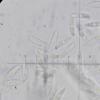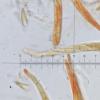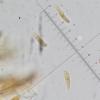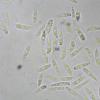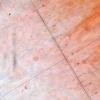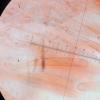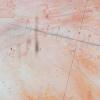
19-11-2025 20:51
 Andreas Millinger
Andreas Millinger
Good evening,found this species on a felled trunk

19-11-2025 13:04
 Bruno Coué
Bruno Coué
Bonjour,je sollicite votre avis pour la récote

17-11-2025 21:46
Philippe PELLICIERBonjour,Récolté sur bois pourrissant de feuillu

16-11-2025 21:09
 Robin Isaksson
Robin Isaksson
Anyone recognize this acc. to pictures.? Found on

18-11-2025 13:59
Nogueira HéctorNovember 14, 2025 Brazuelo (León) SPAIN Hymenosc

17-11-2025 19:14
herman lambertApothécie discoïde 0.6 cm diam., orangeFace hym�

17-11-2025 21:57
Philippe PELLICIERBonjour,Récolté sur bois de feuillu mort dur, no

14-11-2025 16:26
 Marian Jagers
Marian Jagers
Hello everyone, On dead wood of Cytisus scoparius

15-11-2025 23:22
Mario FilippaHello,this is what I think to be Hymenoscyphus mac
? on beech leaves
Ralph Vandiest,
20-09-2013 21:31
I found these little white species on beech leaves. They measure around 1/1,2mm. Spores 20/23x5µm, J+. Asci 87/107x9/10µm. Can anybody tell me what this is?
regards,
Ralph
Michel Hairaud,
20-09-2013 21:44

Re : ? on beech leaves
Hi Ralph,
I would suggest to compare your fungus to Hymenoscyphus caudatus though I never found it on Beech leaves
Amitiés
Michel
I would suggest to compare your fungus to Hymenoscyphus caudatus though I never found it on Beech leaves
Amitiés
Michel
Björn Wergen,
20-09-2013 23:26

Re : ? on beech leaves
Hi,
this cannot be H. caudatus, because this species has spores with a central depression and are not so scutuloid as shown on the photos.
In my opinion H. caudatus should have spores which are formed in a transition from typically "caudatus-shaped" to the "scutula-shape", which is also shown on several Baral drawings.
regards,
björn
this cannot be H. caudatus, because this species has spores with a central depression and are not so scutuloid as shown on the photos.
In my opinion H. caudatus should have spores which are formed in a transition from typically "caudatus-shaped" to the "scutula-shape", which is also shown on several Baral drawings.
regards,
björn
Michel Hairaud,
21-09-2013 00:27

Re : ? on beech leaves
Ok Björn,
So do you think H. fageolus would be a better proposal. I have here a picture of a collection I called H. fageolus , on Fagus leaf. Spores look more scutuloid, even if some may presnt also some kind of central depression.
I suppose, Ralph that you noticed paraphyses with VBs , what about croziers ?
Michel
So do you think H. fageolus would be a better proposal. I have here a picture of a collection I called H. fageolus , on Fagus leaf. Spores look more scutuloid, even if some may presnt also some kind of central depression.
I suppose, Ralph that you noticed paraphyses with VBs , what about croziers ?
Michel
Hans-Otto Baral,
21-09-2013 09:23

Re : ? on beech leaves
Hi
I am not sure how variable H. caudatus is. My impression is that it is polyphagous and although it frequently occurs on Populus/Salix, Acer, and Betulaceae, I have also some records on Fagus and Fraxinus.
On Fagus leaves is HB 8350a, and on Fagus cupules 7588c (see Cubby). But Björn is right, also here the spores are not prominently scutuloid, and show a very slight central constriction.
The constriction is also seen on Michel's photo of fageolus (the valid name is apparently the American albopunctus), which shows big oil drops which are untypical of typical H. caudatus (in my sense). On Ralph's photo a constriction can hardly be seen indeed.
H. fageolus has smaller spores than H. caudatus, though sometimes up to 18. But 20-23 I think is impossible.
Important is also to be sure about the absence of croziers. Rarely I saw collections with croziers. In your case the ascus bases look more like simple-septate.
Zotto
I am not sure how variable H. caudatus is. My impression is that it is polyphagous and although it frequently occurs on Populus/Salix, Acer, and Betulaceae, I have also some records on Fagus and Fraxinus.
On Fagus leaves is HB 8350a, and on Fagus cupules 7588c (see Cubby). But Björn is right, also here the spores are not prominently scutuloid, and show a very slight central constriction.
The constriction is also seen on Michel's photo of fageolus (the valid name is apparently the American albopunctus), which shows big oil drops which are untypical of typical H. caudatus (in my sense). On Ralph's photo a constriction can hardly be seen indeed.
H. fageolus has smaller spores than H. caudatus, though sometimes up to 18. But 20-23 I think is impossible.
Important is also to be sure about the absence of croziers. Rarely I saw collections with croziers. In your case the ascus bases look more like simple-septate.
Zotto
Ralph Vandiest,
21-09-2013 16:11
Re : ? on beech leaves
Hello all,
I ooked agian today and concerning the spores I see no central depression. Today I found spores varrying between 18 & 23µm. About 'croiziers', all these ascos are quite new for me so judging is difficult. Therfore I took some more picture. Hope this helps.
Regards,
Ralph
I ooked agian today and concerning the spores I see no central depression. Today I found spores varrying between 18 & 23µm. About 'croiziers', all these ascos are quite new for me so judging is difficult. Therfore I took some more picture. Hope this helps.
Regards,
Ralph
Hans-Otto Baral,
21-09-2013 17:00

Re : ? on beech leaves
Wonderful and clear: no croziers.
White (1943) found the asci of the type of H. caudatus to be without. Regrettably his illustration lacks a remark in the legend. The spores in his drawing do not look scutuloid. On the left species the lack of croziers is illustrated (for caudatus this is only mentioned in the text)
Zotto
White (1943) found the asci of the type of H. caudatus to be without. Regrettably his illustration lacks a remark in the legend. The spores in his drawing do not look scutuloid. On the left species the lack of croziers is illustrated (for caudatus this is only mentioned in the text)
Zotto
Michel Hairaud,
21-09-2013 22:03

Re : ? on beech leaves
Merci Zotto for your attention and detailed answer
Michel
Michel
Ralph Vandiest,
22-09-2013 13:50
Re : ? on beech leaves
hello,
thank you all for very usefull the information.
regards
Ralph
thank you all for very usefull the information.
regards
Ralph


